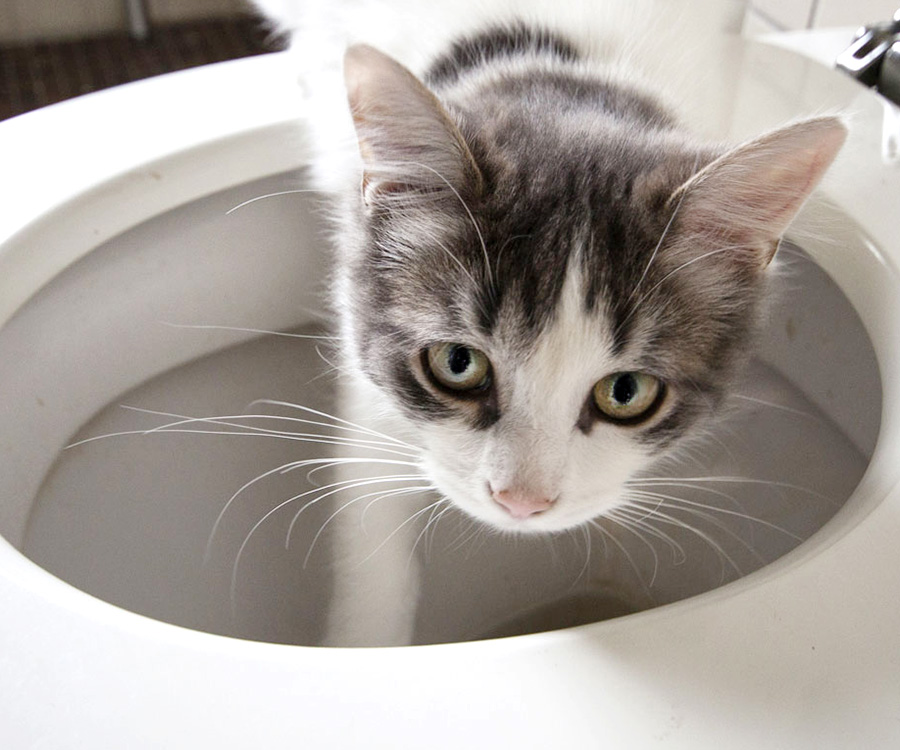We have unearthed this great article relating to Don’t flush cat feces down the toilet below on the web and felt it made perfect sense to relate it with you on this page.

Introduction
As pet cat owners, it's vital to be mindful of how we get rid of our feline friends' waste. While it might appear practical to purge cat poop down the bathroom, this method can have harmful repercussions for both the setting and human health and wellness.
Environmental Impact
Flushing pet cat poop presents hazardous microorganisms and bloodsuckers into the water system, posturing a significant risk to water ecological communities. These contaminants can negatively affect aquatic life and concession water quality.
Health Risks
Along with ecological worries, flushing feline waste can also posture health and wellness dangers to humans. Pet cat feces might consist of Toxoplasma gondii, a bloodsucker that can trigger toxoplasmosis-- a potentially serious disease, especially for pregnant females and individuals with weakened immune systems.
Alternatives to Flushing
Luckily, there are more secure and extra responsible methods to deal with feline poop. Consider the following options:
1. Scoop and Dispose in Trash
The most common technique of taking care of feline poop is to scoop it into an eco-friendly bag and toss it in the trash. Be sure to use a devoted litter inside story and throw away the waste promptly.
2. Usage Biodegradable Litter
Choose biodegradable pet cat litter made from products such as corn or wheat. These trashes are eco-friendly and can be safely gotten rid of in the garbage.
3. Hide in the Yard
If you have a lawn, think about hiding feline waste in a marked location away from vegetable yards and water sources. Make sure to dig deep sufficient to prevent contamination of groundwater.
4. Set Up a Pet Waste Disposal System
Buy a pet waste disposal system specifically developed for cat waste. These systems make use of enzymes to break down the waste, decreasing odor and ecological influence.
Conclusion
Accountable family pet possession prolongs beyond providing food and sanctuary-- it also involves correct waste monitoring. By refraining from flushing cat poop down the commode and opting for alternate disposal techniques, we can reduce our ecological impact and protect human wellness.
Why You Should Never Flush Cat Poop Down the Toilet
A rose by any other name might smell as sweet, but not all poop is created equal. Toilets, and our sewage systems, are designed for human excrement, not animal waste. It might seem like it couldn’t hurt to toss cat feces into the loo, but it’s not a good idea to flush cat poop in the toilet.
First and foremost, assuming your cat uses a litter box, any waste is going to have litter on it. And even the smallest amount of litter can wreak havoc on plumbing.
Over time, small amounts build up, filling up your septic system. Most litter sold today is clumping; it is made from a type of clay that hardens when it gets wet. Ever tried to scrape old clumps from the bottom of a litter box? You know just how cement-hard it can get!
Now imagine just a small clump of that stuck in your pipes. A simple de-clogger like Drano isn’t going to cut it. And that means it’s going to cost you big time to fix it.
Parasitic Contamination
Believe it or not, your healthy kitty may be harboring a nasty parasite. Only cats excrete Toxoplasma in their feces. Yet it rarely causes serious health issues in the cats that are infected. Most people will be fine too if infected. Only pregnant women and people with compromised immune systems are at risk. (If you’ve ever heard how women who are expecting are excused from litter cleaning duty, Toxoplasma is why.)
But other animals may have a problem if infected with the parasite. And human water treatment systems aren’t designed to handle it. As a result, the systems don’t remove the parasite before discharging wastewater into local waterways. Fish, shellfish, and other marine life — otters in particular — are susceptible to toxoplasma. If exposed, most will end up with brain damage and many will die.
Depending on the species of fish, they may end up on someone’s fish hook and, ultimately on someone’s dinner plate. If that someone has a chronic illness, they’re at risk.
Skip the Toilet Training
We know there are folks out there who like to toilet train their cats. And we give them props, it takes a lot of work. But thanks to the toxoplasma, it’s not a good idea.

I'm certainly very excited about How to Dispose of Cat Poop and Litter Without Plastic Bags and I really hope you enjoyed reading the article. In case you enjoyed our blog post please be sure to share it. I thank you for reading our article about How to Dispose of Cat Poop and Litter Without Plastic Bags.
Click Here